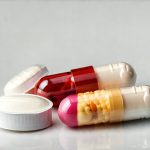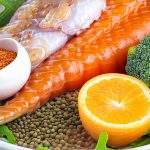Introduction
Living with bladder issues – whether it’s urgency, frequency, incontinence, or sensitivity related to conditions like Interstitial Cystic Syndrome (IC) – can significantly impact daily life. Many people focus on avoiding bladder irritants like caffeine and citrus, which is certainly important. However, a frequently overlooked aspect of bladder health is the role of dietary fiber. Fiber isn’t just about digestive regularity; it profoundly influences inflammation levels throughout the body, supports a healthy gut microbiome (which has a strong connection to overall health including bladder function), and can even help manage weight – all factors that contribute to bladder control. This article will explore how incorporating high-fiber snacks into your diet can be a proactive step towards supporting your bladder health and improving your quality of life.
Understanding the link between fiber and bladder support requires acknowledging the gut-bladder axis, a growing area of research demonstrating the bidirectional communication between these two systems. A compromised gut microbiome – often due to low fiber intake or other dietary factors – can lead to increased intestinal permeability (often called “leaky gut”), allowing inflammatory substances to enter the bloodstream. This systemic inflammation can exacerbate bladder symptoms and contribute to discomfort. Conversely, a healthy gut, fueled by sufficient fiber, promotes a robust immune system and reduces overall inflammation, potentially easing bladder irritation. The right snack choices aren’t merely about what you avoid; they’re about actively nourishing your body for optimal function.
The Power of Fiber: How it Supports Bladder Health
Fiber isn’t a single entity; it comes in two main types – soluble and insoluble – each playing a unique role. Soluble fiber dissolves in water, forming a gel-like substance that slows digestion and can help regulate blood sugar levels. Good sources include oats, beans, apples, and citrus fruits (though for some bladder sensitivities, citrus may need to be limited). Insoluble fiber, on the other hand, doesn’t dissolve in water; it adds bulk to stool, promoting regularity and preventing constipation. Whole grains, vegetables, and wheat bran are excellent sources of insoluble fiber. Both types are crucial for a healthy digestive system and contribute to overall well-being, impacting bladder health indirectly through reduced inflammation and improved gut function.
The benefits extend beyond just digestion. Fiber-rich foods tend to be more filling, which can aid in weight management. Excess weight puts additional pressure on the pelvic floor muscles – essential for bladder control – potentially worsening symptoms of incontinence. Furthermore, fiber feeds the beneficial bacteria in your gut, fostering a diverse and thriving microbiome. A healthy microbiome produces short-chain fatty acids (SCFAs) like butyrate, which have anti-inflammatory properties and can strengthen the intestinal barrier, reducing systemic inflammation that might irritate the bladder. This intricate interplay between diet, gut health, and bladder function highlights why fiber is so vital for holistic well-being. For a deeper dive into maintaining adequate hydration alongside fiber intake, consider reviewing these helpful hydration strategies.
It’s important to gradually increase your fiber intake. Suddenly adding a large amount of fiber can lead to bloating, gas, and discomfort – potentially exacerbating bladder symptoms. Start with small changes, such as swapping white bread for whole wheat or adding a handful of berries to your breakfast. Drink plenty of water throughout the day, as fiber absorbs water and needs adequate hydration to function effectively. Listening to your body and adjusting your intake based on your individual tolerance is key.
Fiber-Rich Snack Ideas for Bladder Support
Here are some specific snack options that prioritize both high fiber content and bladder-friendly ingredients:
- Chia Seed Pudding: Chia seeds are a fantastic source of soluble fiber and omega-3 fatty acids. Combine 2 tablespoons of chia seeds with 1 cup of unsweetened almond milk (or other tolerated milk alternative) and let it sit for at least 30 minutes, or overnight. You can add a touch of maple syrup or vanilla extract for flavor, but be mindful of sugar content. Berries are a great addition too – they offer antioxidants and extra fiber!
- Edamame: Steamed edamame (soybeans in their pods) is packed with protein and fiber. A half-cup serving provides approximately 4 grams of fiber. It’s easy to prepare, satisfyingly crunchy, and generally well-tolerated by people with bladder sensitivities. Avoid heavily seasoned varieties.
- Apple Slices with Almond Butter: Apples provide soluble fiber, while almond butter offers healthy fats and a bit of protein. Choose unsweetened almond butter and portion control is helpful as nut butters are calorie-dense. This snack provides sustained energy and supports regular digestion.
Portion Control & Hydration: Maximizing Benefits
Portion size matters significantly when it comes to fiber intake. While fiber is beneficial, consuming excessive amounts at once can lead to digestive distress, potentially triggering bladder symptoms. Start with smaller portions of high-fiber snacks and gradually increase as your body adjusts. Pay attention to how different foods affect your individual system – everyone responds differently. Keeping a food diary can be incredibly helpful in identifying trigger foods and understanding your tolerance levels.
Hydration is equally crucial. Fiber absorbs water, so adequate fluid intake is essential for preventing constipation and ensuring that fiber moves smoothly through the digestive tract. Aim to drink at least 8 glasses of water per day, or more if you’re physically active. Water not only supports digestion but also helps dilute urine, which can reduce bladder irritation in some individuals. To optimize your hydration routines, explore morning hydration techniques for a gentle start to the day.
Reading Labels & Avoiding Hidden Irritants
Become a label-reading expert! Many packaged snacks marketed as “healthy” may contain hidden bladder irritants or excessive sugar. Carefully examine the ingredient list and nutrition facts panel. Look for foods that are naturally high in fiber, rather than those with added fiber – these often contain processed ingredients. Be wary of artificial sweeteners, which can sometimes trigger bladder symptoms in sensitive individuals.
Specifically, watch out for: – Artificial colors and flavors – Excessive sugar (including hidden sugars like corn syrup) – Citrus ingredients (if you’re sensitive) – Caffeine (even small amounts can be problematic for some). Choose snacks with short, recognizable ingredient lists – that’s generally a good indicator of a healthier product. Prioritize whole, unprocessed foods whenever possible. Remember that even seemingly healthy options might not be suitable if they contain bladder irritants. If you’re looking to swap out sugary drinks, low-sugar drink alternatives can be a great starting point.
This information is intended for general knowledge and informational purposes only, and does not constitute medical advice. It is essential to consult with a qualified healthcare professional for any health concerns or before making any decisions related to your health or treatment. Understanding how diet impacts bladder health can also be supported by learning about natural probiotic sources that support a healthy gut microbiome.





















